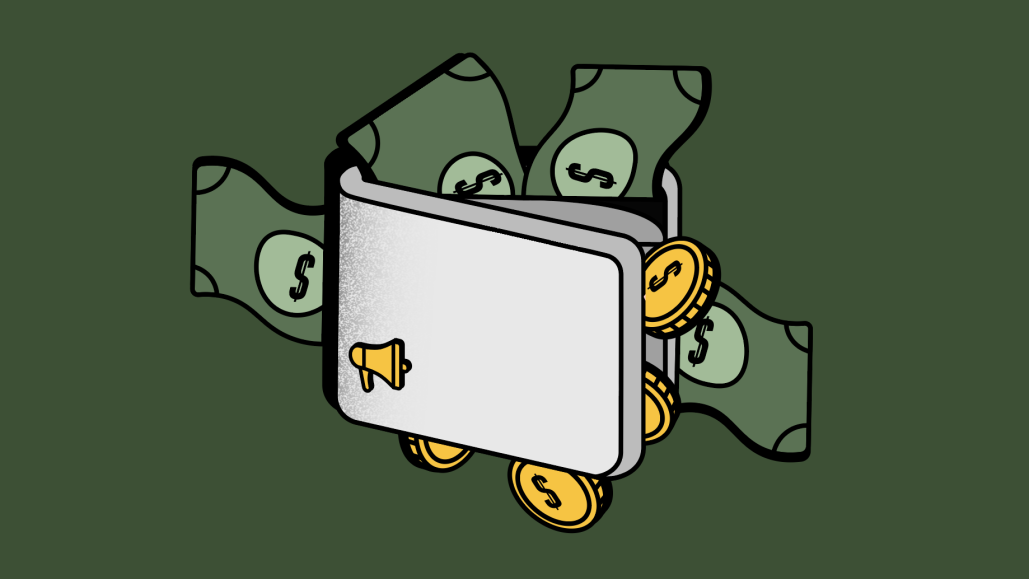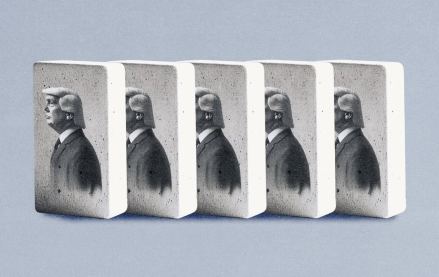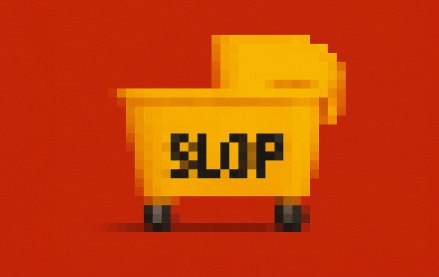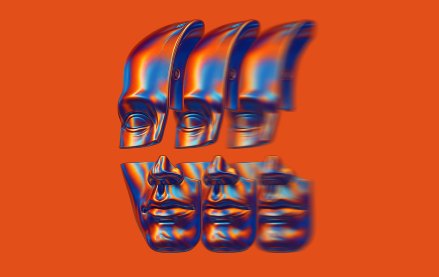Save 50% on a 3-month Digiday+ membership. Ends Dec 12.

Creator funds are back en vogue thanks to platforms like Substack and the Billion Dollar Boy agency launching fresh versions this year. And what better way to pique creators’ interests than by offering them cash rewards? Or so they thought.
TikTok introduced creator funds to the scene back in 2020, which led to its platform peers trying to outdo each other by offering bigger pots of cash. But over the years, social media apps including YouTube and Snapchat have wound down their funds in favor of the more sustainable revenue-share deals – an offering which required a hefty upfront investment, (far more than a creator fund), but is considered to provide creators with more consistent earnings.
Still, while creator funds appear shiny and new again, Digiday busts the most persistent myths about them, and sheds light on the truth behind those payouts.
1. “Creators funds are a reliable source of income”
False. Ask any full-time creator: funds fluctuate like CPMs in Q1, which naturally means some months they can do really well, others they might just make a few bucks. Added to that, when platforms set aside fixed budgets and more creators join, the pot of cash typically doesn’t get any bigger. So there’s less to go around overall. Predictability? Not part of the package.
2. “Creator funds are indefinite / open-ended”
Not really. They’re typically launched as a pool of cash. What we do know is when creator funds are launched, the platforms usually announce them with some hefty figure to entice creators to want to join. Think, Snapchat’s initial Spotlight creator fund launched in 2020, and initially committed to paying out $1 million per day, before lowering that to $100,000 when the company realized it was shelling out a lot of cash (and quickly). TikTok’s first creator fund also launched in 2020, with an initial $200 million commitment, before boosting that to $2 billion in the U.S.
The caveat? It’s still unclear how much of any of these funds have fully paid out. Anytime each fund has been wound down or “evolved” into a better version, the platforms haven’t revealed how much cash they’ve giving creators.
3. “Creator funds are a sign the platform values creators”
Half true at best. Creator funds are marketing plays as much as they are payouts. They’re carrots to lure talent into using features the platform wants to grow. Value, in this case, is transactional.
4. “Creator funds are transparent”
Nope. For the most part, details about how the platforms decide what constitutes a qualifying view, for example, sits in a gray area. The understanding is qualifying views are typically made according to what features / content a platform is trying to push at any given time. That’s not to say that the platforms aren’t trying – TikTok’s Creativity Program offers creators access to an updated dashboard to track their video eligibility, estimated revenue and performance metrics, for example. But that doesn’t mean those criteria won’t be tweaked in the future.
In early 2024 when Digiday caught up with TikTok creator Madeline Ford, speaking about how she found the early days of the platform’s upgraded Creativity Program (at the time called Creativity Program Beta), she said it would be nice if creators were given a range of how much they’d make depending on the length of each TikTok.
“If I have a 10 minute video, why wouldn’t I just split it up into 10 parts and get 10 times the amount of money?” she said, adding that at the time TikTok was really pushing long-form content and wanting creators to post longer videos. But it didn’t make sense, monetarily because they’d get more cash by chopping videos up.
5. Creator funds automatically signal a revenue share deal is on its way
Not always. Substack’s Creator Accelerator Fund and Billion Dollar Boy’s Creator Fund are cases in point: Substack, for example, already had a revenue share model in play (platform takes a 10% cut of all subscriptions), even before launching its fund. And Billion Dollar Boy is an agency rather than a social media platform which made a nice gesture, but doesn’t need it for its business.
It’s true that revenue share models are a hefty investment so often creator funds are seen as a bridge to that serious step. But it doesn’t mean the platform needs or wants to make that leap.
6. “All creators can join any creator fund”
False. As much as platforms are willing to pay creators they deem worthy, they aren’t offering out free money to everyone.
For each fund out there, the platform requires its creators to meet a set of eligibility criteria which they believe makes them the cream of the crop and worthy of rewarding their efforts with cash. For example, TikTok’s creativity program requires creators to be at least 18 years of age, have at least 10,000 followers and a minimum of 100,000 valid video views in the last 30 days.
7. “Creator funds are all the same”
Not quite. For the most part, the traditional creator funds (think Snapchat’s or TikTok’s first funds), were a single pile of cash set aside for creators.
Nowadays, the industry has funds like Substack’s Creator Accelerator Fund – not a pot of cash, but instead an insurance policy that Substack will “make up the difference” if creators moving their subscriptions over to the platform don’t make as much cash as they might have hoped for. In other words – there’s no guarantee of a payout. Even Billion Dollar Boy’s recently launched creator fund has been set out more like a competition – a pot of cash set aside for 20 creators, whose applications will be judged by a jury to win a creator pass to Cannes Lions.
8. “Creator funds provide free money”
Nope, not at all. For those creators who are lucky enough to earn any cash from a creator fund, the money is still taxable.
Think of it like being a freelancer. Some months you might earn more than others, just like you would in any other freelance capacity. But whatever money you do make is still considered earnings, and still liable to be taxed.
9. “Joining a creator fund means you can give up your full time job”
For most – not even close. Most creators still have full time jobs to pay their rent and bills because creator fund payouts barely cover the cost of monthly outgoings. It’s only a select few who earn lucrative amounts and can solely rely on creator fund payouts. For the vast majority, their creator fund cash is simply passive income they view like an added bonus for their efforts.
10. “Creator funds impact video views”
Wrong. There was speculation for a long time that joining TikTok’s creator fund, for example, had a negative impact on views. But this isn’t accurate. The only thing that impacts views is when the platform tinkers with its algorithm, favoring one type of content over another. And those fewer views naturally impacted peoples’ generated revenue.
Case in point: back in 2023, a year after TikTok’s former head of product Sean Kim had left the platform, he told Digiday that platforms will change rules to suit their own agendas. “I know because I used to change rules all the time,” he said. “We tweaked the algorithm every single day. It’s all about improving [user] retention.”
More in Marketing

How Costco stood against Trump’s agenda on tariffs, DEI this year
Costco has continuously been held up as an example of a company that has stood firm in its willingness to do what it believes is best for the business.

Brands look to experiential marketing as antidote to AI slop, digital fatigue
Brands are prioritizing experiential and IRL marketing as an antidote to ‘AI slop’ and digital fatigue.

Agencies push curation upstream, reclaiming control of the programmatic bidstream
Curation spent much of this year in a fog, loosely defined and inconsistently applied. Agencies say they plan to tighten the screws in 2026.








